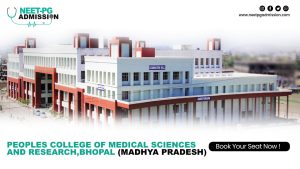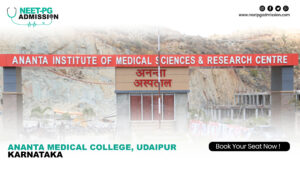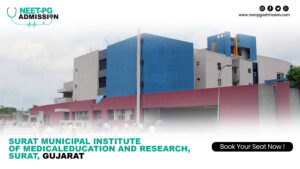MBBS vs BAMS vs BHMS: Which Medical Course is Right for You?
Choosing the right medical course after completing higher secondary education is one of the most crucial decisions for students aspiring to build a career in healthcare. In India, MBBS (Bachelor…
Choosing the right medical course after completing higher secondary education is one of the most crucial decisions for students aspiring to build a career in healthcare. In India, MBBS (Bachelor of Medicine and Bachelor of Surgery), BAMS (Bachelor of Ayurvedic Medicine and Surgery), and BHMS (Bachelor of Homeopathic Medicine and Surgery) are among the most sought-after programs.
Each of these courses offers unique career opportunities, approaches to treatment, and professional scopes. This blog provides a detailed comparison of MBBS, BAMS, and BHMS, helping you identify which course aligns best with your interests, skills, and career goals.
Overview of the Courses
1. MBBS – Bachelor of Medicine and Bachelor of Surgery
- Duration: 5.5 years (including a 1-year compulsory internship)
- Focus: Conventional allopathic medicine, surgery, and modern clinical practices
- Entrance Exam: NEET UG
- Eligibility: 10+2 with Physics, Chemistry, and Biology (PCB) with at least 50% marks (for General category)
MBBS is the most recognized and widely pursued medical course in India. It equips students with in-depth knowledge of human anatomy, pathology, pharmacology, and surgery, enabling them to become licensed medical practitioners.
2. BAMS – Bachelor of Ayurvedic Medicine and Surgery
- Duration: 5.5 years (including internship)
- Focus: Traditional Ayurvedic medicine combined with elements of modern science
- Entrance Exam: NEET-UG (mandatory since 2018)
- Eligibility: 10+2 with PCB and minimum qualifying marks
BAMS integrates the ancient principles of Ayurveda with modern healthcare practices. Graduates are trained in herbal medicine, therapies, and preventive healthcare, preparing them to practice Ayurveda or pursue research in natural medicine.
3. BHMS – Bachelor of Homeopathic Medicine and Surgery
- Duration: 5.5 years (including internship)
- Focus: Homeopathy and alternative medicine practices
- Entrance Exam: NEET-UG (admissions in many states require it)
- Eligibility: 10+2 with PCB subjects
BHMS focuses on homeopathic principles, which emphasize stimulating the body’s self-healing process through diluted natural substances. Graduates can practice as licensed homeopathic doctors in India.
Eligibility Criteria: MBBS vs BAMS vs BHMS
MBBS
- Age Requirement: Applicants must be at least 17 years old and not more than 25 years old as of December 31 of the admission year.
- Nationality: Only Indian citizens are eligible.
- Academic Qualification: Candidates should have completed 10+2 with Physics, Chemistry, Biology, and English as mandatory subjects.
- Minimum Marks: A minimum of 50% in PCB is required for the General category, while reserved category candidates need at least 40%.
- Entrance Exam: A qualifying percentile in the NEET (National Eligibility cum Entrance Test) is mandatory for admission into MBBS courses in India.
BAMS
- Age Limit: The candidate must be at least 17 years old and should not exceed 25 years of age as on December 31 of the admission year.
- Nationality: Only applicants holding Indian citizenship are eligible.
- Educational Requirement: Completion of 10+2 with Physics, Chemistry, Biology, and English as core subjects is mandatory.
- Minimum Marks: General category candidates must secure at least 60% in PCB subjects, while reserved category students require a minimum of 50%.
- Entrance Examination: Admission to BAMS courses in India requires securing the qualifying percentile in NEET-UG (National Eligibility cum Entrance Test – Undergraduate).
BHMS
- Age Criteria: Applicants must have completed 17 years of age and should not be older than 25 years on December 31 of the admission year.
- Nationality: Only candidates who are Indian citizens can apply.
- Educational Qualification: Completion of 10+2 with Physics, Chemistry, Biology, and English as compulsory subjects is necessary.
- Marks Requirement: A minimum of 60% in PCB subjects is required for the General category, while reserved category candidates need at least 50%.
- Entrance Exam: Admission to BHMS courses in India requires qualifying the NEET-UG (National Eligibility cum Entrance Test – Undergraduate) with the prescribed percentile.
Key Differences Between MBBS, BAMS, and BHMS
To make an informed decision, let us compare these three courses across important aspects:
1. Course Curriculum
- MBBS: Human anatomy, physiology, biochemistry, pathology, pharmacology, general medicine, pediatrics, surgery, gynecology, and community medicine.
- BAMS: Ayurveda principles, herbal medicine, Panchakarma therapy, pharmacognosy, and integration with modern diagnostics.
- BHMS: Homeopathic philosophy, materia medica, repertory, and clinical medicine with a focus on non-invasive treatments.
2. Treatment Approach
- MBBS: Based on evidence-driven modern medicine, advanced technology, and surgical interventions.
- BAMS: Rooted in holistic and preventive care, emphasizing balance in body, mind, and spirit through Ayurveda.
- BHMS: Relies on the “like cures like” principle, focusing on stimulating natural immunity using highly diluted remedies.
3. Recognition and Scope
- MBBS: Globally recognized, with opportunities for specialization (MD/MS) and super-specialization (DM/MCh).
- BAMS: Primarily recognized in India and a few other countries where Ayurveda is practiced. Increasing global demand in wellness and alternative medicine.
- BHMS: Recognized in India and several countries, especially where alternative medicine is accepted.
4. Career Opportunities
MBBS graduates can pursue:
- Clinical practice in hospitals, clinics, or private practice
- Postgraduate studies in various specializations
- Careers in research, medical education, or public health
- Opportunities abroad (with licensing exams like USMLE/PLAB)
BAMS graduates can pursue:
- Practice as Ayurvedic doctors in government or private hospitals
- Careers in wellness centers, Ayurveda resorts, and pharmaceutical companies
- Research in herbal medicine and clinical Ayurveda
- Further studies like MD (Ayurveda)
BHMS graduates can pursue:
- Practice as homeopathic doctors in clinics or hospitals
- Opportunities in teaching and research
- Careers in holistic healthcare and alternative medicine centers
- Further studies like MD (Homeopathy)
5. Salary and Earning Potential
- MBBS: Entry-level doctors may earn INR 6–8 LPA in India, with higher salaries depending on specialization and experience. Globally, earning potential is significantly higher.
- BAMS: Fresh graduates may start with INR 3–5 LPA. Earnings increase with private practice and demand in the wellness industry.
- BHMS: Starting salary ranges from INR 2–4 LPA, but private practice can enhance income significantly over time.
Final Words
The choice between MBBS, BAMS, and BHMS depends largely on your passion, career goals, and the kind of medical practice you wish to pursue. While MBBS provides global recognition and advanced career options in modern medicine, BAMS offers opportunities in Ayurveda and natural healthcare, and BHMS opens doors to alternative medicine through homeopathy.
Before making a decision, evaluate your interests in treatment approaches, willingness to handle the competitive nature of MBBS admissions, and your long-term vision. Each course has its own scope, advantages, and challenges.
By understanding the differences in curriculum, recognition, career opportunities, and global scope, you can choose the medical path best suited to your aspirations.
Contact Us





